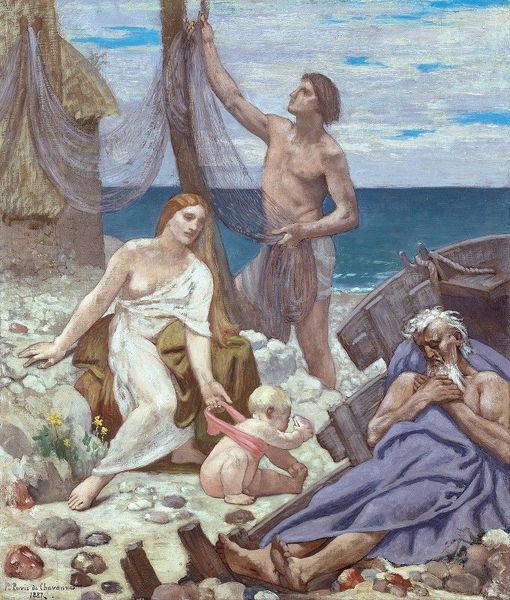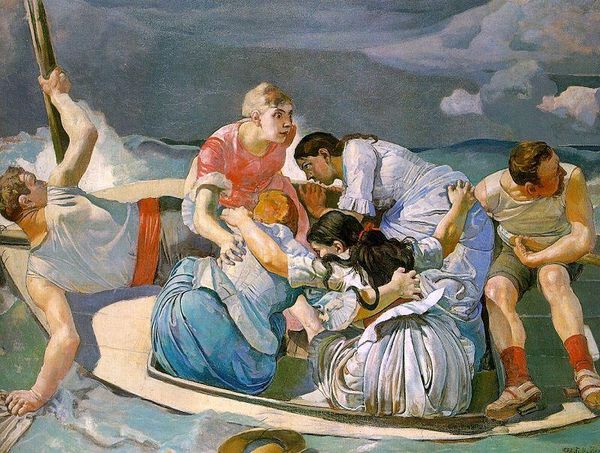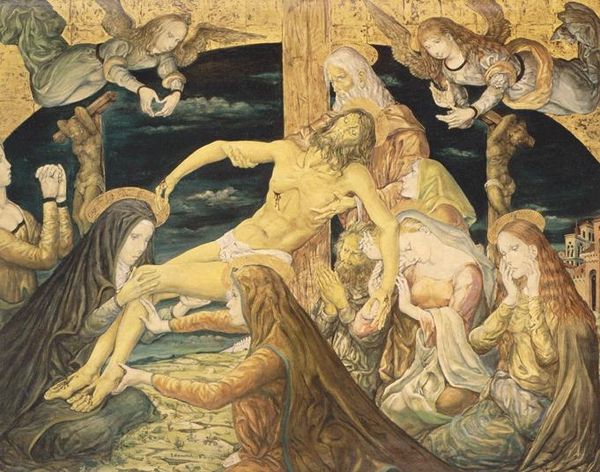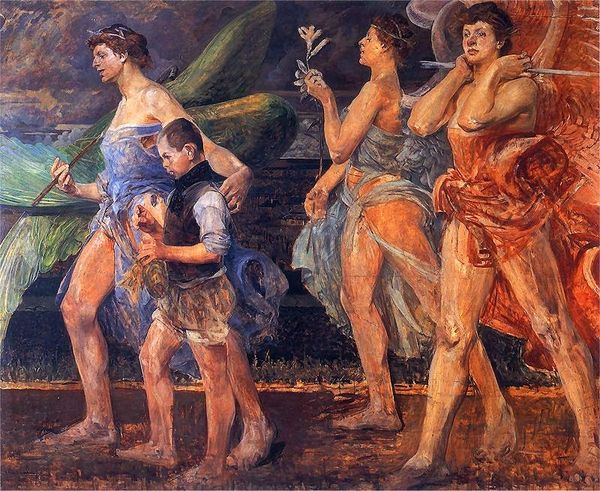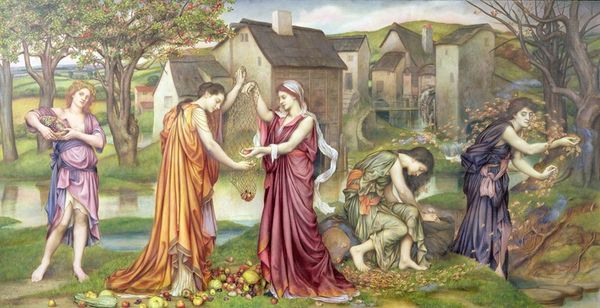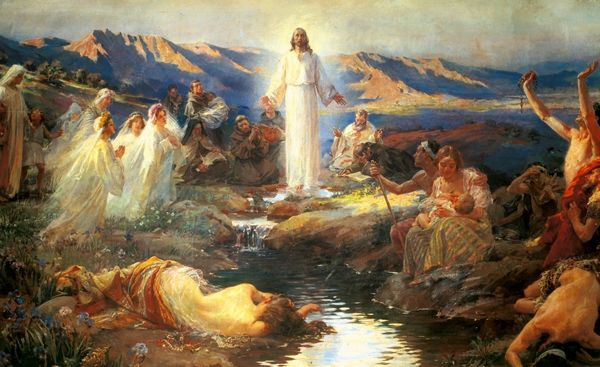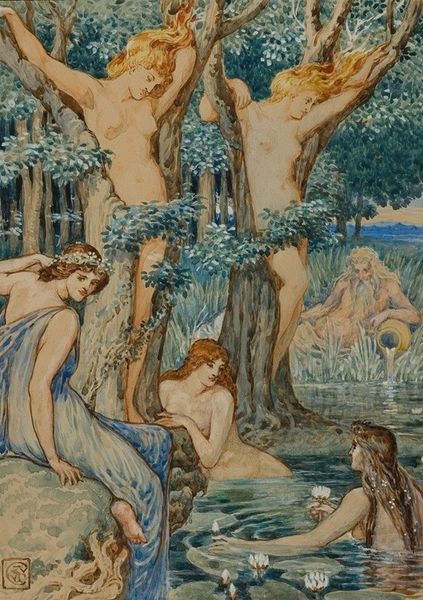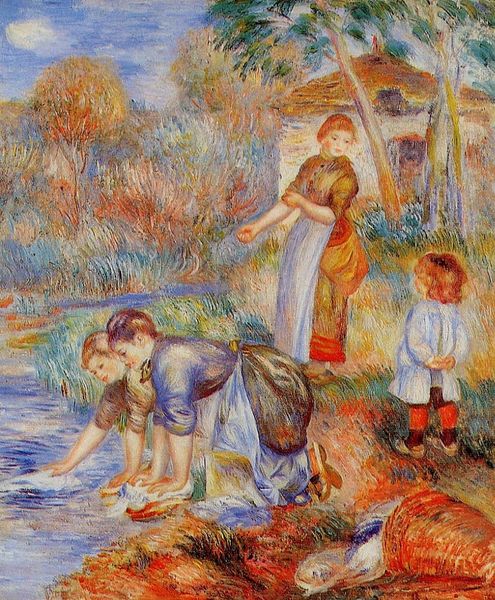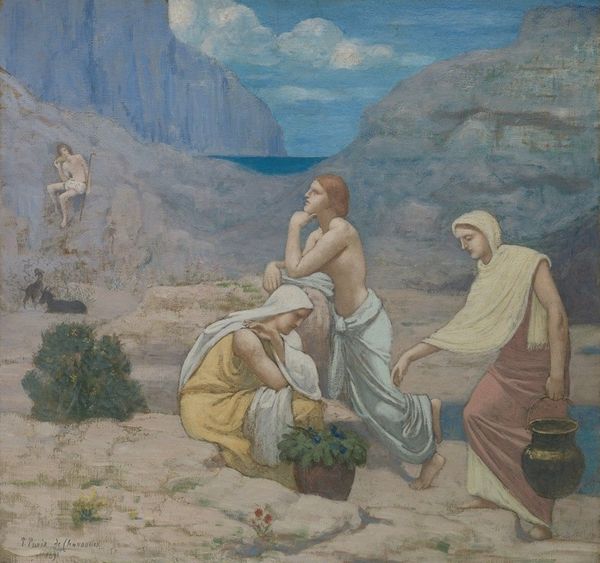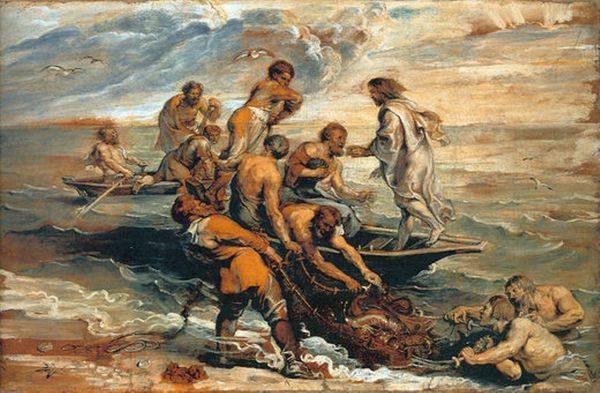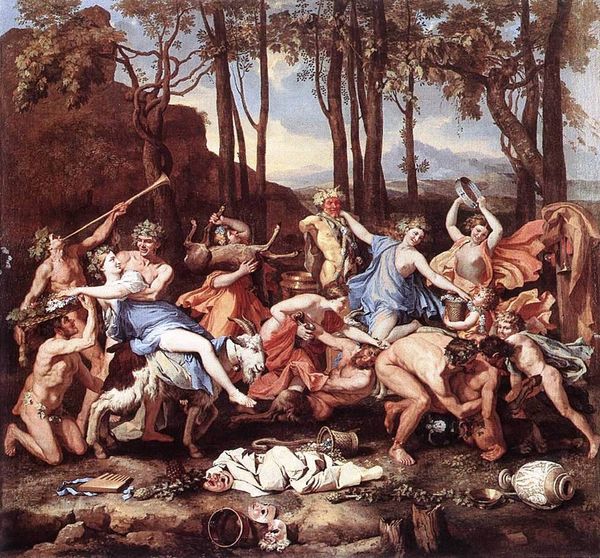
Dimensions: 120 x 200 cm
Copyright: Public domain
Curator: Edward Burne-Jones, a key figure in the Pre-Raphaelite movement, completed "The Mirror of Venus" in 1875. It's an oil painting that resides today in the Calouste Gulbenkian Museum in Lisbon. What strikes you initially about this composition? Editor: The overall mood is incredibly melancholic, almost dreamlike. The figures are so still, almost frozen. And the muted colors enhance that sense of subdued emotion. Curator: Yes, there’s definitely an ethereal quality. Burne-Jones was deeply engaged with symbolism and drew heavily on mythology, and of course this is an ideal canvas, presenting Venus gazing into a pool with her handmaidens. Consider how the reflection doubles the image, adding layers of interpretation about vanity, self-awareness, and even mortality. Editor: Exactly, it makes me think about the societal pressures on women, especially within the art world in 1875. It becomes a commentary on how women are forced to contemplate themselves, their worth being so deeply tied to their appearance. How did the artistic institutions and social expectations shape Burne-Jones' presentation of women here, do you think? Curator: That's astute. He’s clearly drawing on established archetypes of feminine beauty, but with this Pre-Raphaelite leaning toward wistful, almost world-weary figures. Notice the subtle gestures—the downward glances, the gentle touching—they seem to underscore a shared experience of introspection. The pool of water—the mirror—serves not only as a tool of self-assessment, but also as a barrier separating reality from reflection, present from past. Editor: Absolutely, and the backdrop of the desolate landscape reinforces that feeling of isolation. It's as if these women exist outside of conventional society. This could be viewed as both a prison and a sanctuary, and reflects the artist's personal vision within the art market's framework during the late 19th century. I think what makes this so haunting is how relevant this all still feels today. Curator: Indeed. It's a work that lingers, prompting us to question how beauty is constructed, consumed, and ultimately, how it reflects us back to ourselves. The themes Burne-Jones explores continue to ripple outwards into our own world, centuries later. Editor: A poignant reflection of the ongoing dialogue between art and life, isn’t it?
Comments
No comments
Be the first to comment and join the conversation on the ultimate creative platform.

